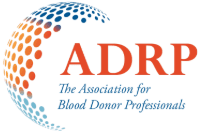Bringing new plasma donors back: testing the efficacy of telephone and e-mail communications with first-time donors
Full article available in link provided
Authors
Rachel Thorpe, Barbara M. Masser, Lilly Nguyen, Carley N. Gemelli, Tanya E. Davison
Abstract
BACKGROUND
As demand for plasma-derived products grows, retention of voluntary nonremunerated plasmapheresis donors is crucial for many blood collection agencies. Currently, there is limited evidence of how to encourage first-time plasmapheresis donors to return and establish a high-frequency donation routine. This study tested the effectiveness of an intervention designed to increase retention of first-time plasmapheresis donors, increase donation frequency, and reduce time to return.
STUDY DESIGN AND METHODS
A total of 6788 first-time plasmapheresis donors were randomly assigned to one of four conditions. Donors received an alternative e-mail or the business-as-usual control e-mail paired or not with a phone call. Outcomes were compared to the control e-mail in intention-to-treat analyses.
RESULTS
Compared with control, donors in all intervention conditions were more likely to donate plasma as their first return donation in 6 months; however, there were no significant differences between intervention conditions. Rates of plasma donation in the alternative e-mail, control e-mail plus call, and alternative e-mail plus call conditions were 17.0, 15.0, and 18.0% higher than control. While the extra donations obtained in the alternative e-mail condition were cost neutral, the cost of one additional donation in the call conditions ranged from 20.14-20.89 AUD (13.08-13.56 USD).
CONCLUSION
Communications specifically designed to encourage first-time plasmapheresis donors to view regular plasmapheresis donations as “easy”; to forward-book more than one appointment; and to provide education about plasma are effective in encouraging donors to return to plasma, to donate more frequently, and to return faster.
April 20, 2020
Related Resources
Engaging blood donors as advocates Social media preferences and associations with marketing
Background: Various critical medical procedures would become impossible without blood donations—saving lives in emergencies, surgeries, and chronic conditions like thalassemia. Therefore, it seems crucial to enhance donor recruitment and ensure…
Rethinking the role of older donors in a sustainable blood supply
INTRODUCTION Many countries, particularly high human development index countries, are facing the challenge of an aging population.1 For Blood Collection Agencies (BCAs) in these countries, an aging population poses two…


